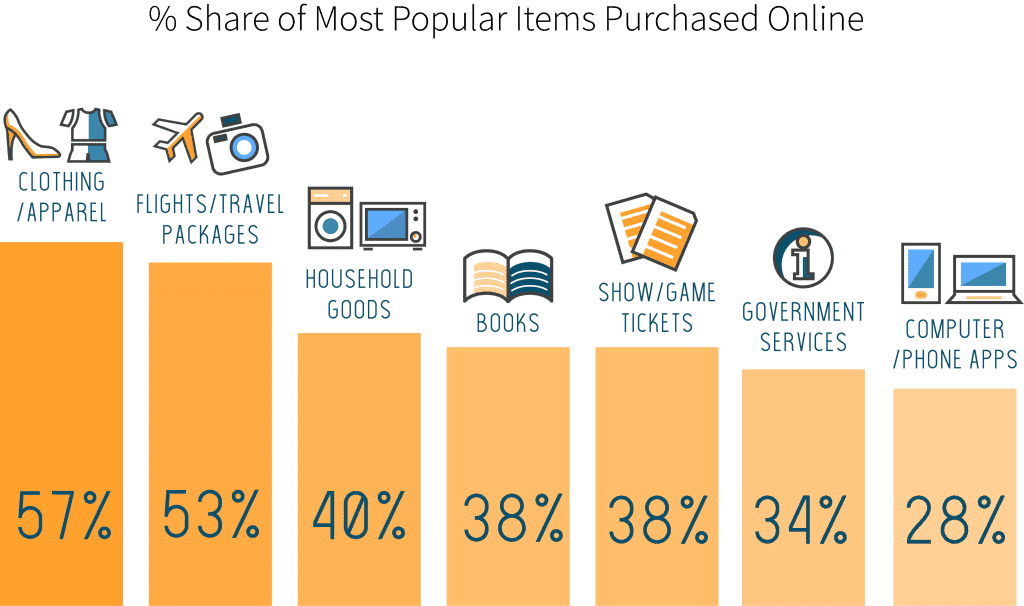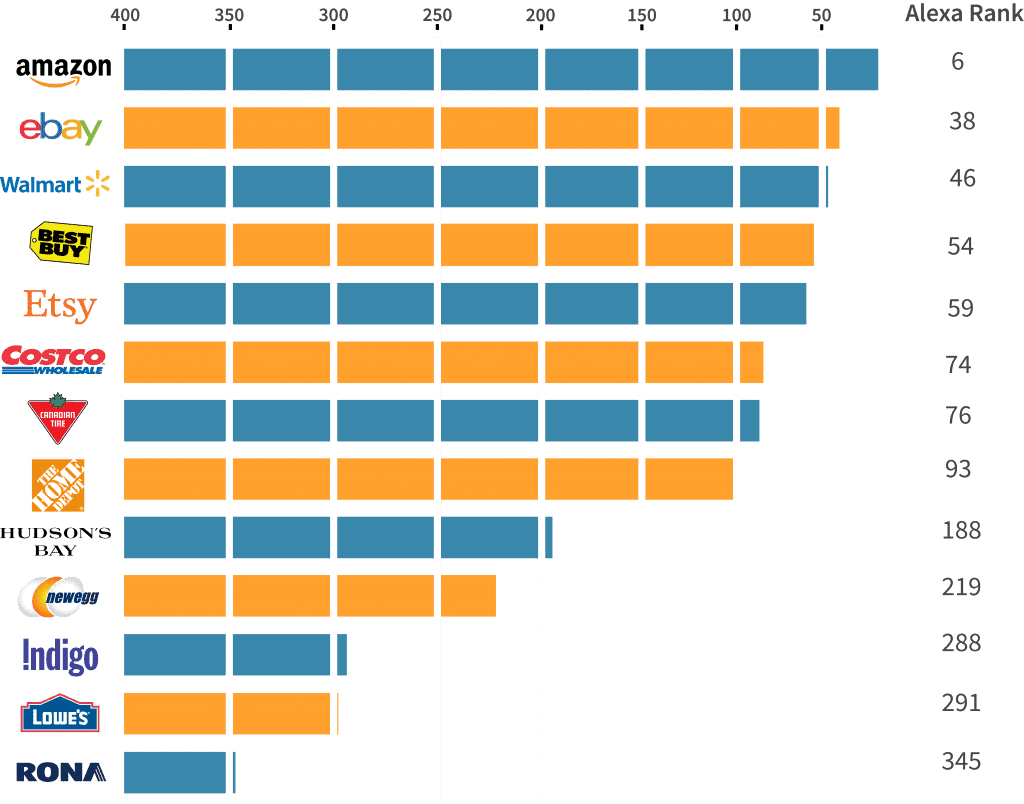
2019 US eCommerce Market Report
23/08/2021
Bad Data is Expensive!
14/09/2021Internet Usage
With a population of 37 million, Canada doesn’t fare too badly as the 8th largest eCommerce market in the world. Currently, 92% of Canadians use the Internet, with 86% having a broadband internet connection in their homes. Also interesting is the fact that 52% of Canadians have 5 or more connected internet devices in their homes – this is broken down into the following:

Unsurprisingly, 26% of all social media usage in Canada comes from 25-34 year olds, with Facebook being the most popular platform (77% usage). According to CIRA (Canadian Internet Registration Authority), 73% of Canadians spend at least 3-4 hours online each day – this is made up of the following activities: email, banking, accessing social media, catching up on news/current events and shopping.
Mobile now makes up almost 1/3 of all media consumption, meaning that it’s now on par with TV usage. However, there is also a rising concern surrounding the amount of time that Canadians are spending on their mobile devices…however, it could be argued that this is actually a global concern and trend that doesn’t seem to be slowing down any time soon. This is especially true as 58% of Canadian households have at least one digital content subscription – Netflix remains the most frequently used streaming platform followed by Spotify.
Canadian eCommerce Market
The Canadian eCommerce market is currently valued at C$54B in 2019 and is still growing (and with roughly 86% of Canadians shopping online, that’s at least 31M+ people using the Internet to make a purchase). It’s also claimed that while traditional retail growth has somewhat flatlined, eCommerce appears to continuously be on the upward trajectory – it’s estimated that eCommerce sales will amount to at least C$65B by 2020 – an increase of 20%. In terms of shopping location, despite Nunavut being the largest province in Canada in terms of land mass, it has the lowest population and number of eCommerce websites. Ontario, which accounts for 38% of the country’s population, has both the highest number eCommerce websites in the country – this is unsurprising as largely populated areas such as Toronto, Hamilton and Ottawa (the nation’s capital) are situated here.
Despite computers being the most popular device to make online purchases from, 40% of Canadian eCommerce sales were made through mobile devices in 2018. This figure has increased each year since 2014 (when only 28% of online purchases were made through mobile phones). Fast-loading sites and apps are crucial to ensure that mobile shoppers have a positive buying experience, particularly as slow loading sites are a contributing factor to cart abandonment (one study reported that 15% of Canadian shoppers abandoned their carts solely for this reason) – tools such as Google’s PageSpeed Insights and GTmetrix are great in identifying speed issues with your website (both mobile and desktop), with some tips on how to improve things.
Unsurprisingly, fashion is the most popular eCommerce segment in Canada, with a market value of C$12B. However, it’s also reported that almost half of Canadian shoppers refrain from purchasing goods online if the retailer does not offer free returns. From TAMI’s analysis, only 38% of Canadian retailers offer returns so this is something that needs to be addressed by retailers in order to improve shoppers’ online buying experience, and also to reduce cart abandonment rates.
Below is the share of online spend by product/service category – although not included here, a segment that seen a large increase in online spend is food/grocery, jumping from 14% in 2016 to 24% in 2018.

What’s also interesting is the list of most popular eCommerce websites based on Canadian Alexa rank; the top two positions are currently dominated by marketplace giants Amazon and eBay. Although this is somewhat unsurprising considering that twice as many Canadians have registered with Amazon Prime in 2019 compared to in 2018. Walmart, BestBuy and Etsy also feature within the top 5, with the first Canadian retailer (Canadian Tire) not making an appearance until 7th place.

Outlook for the Canadian eCommerce Market
Retail eCommerce is expected to reach C$65B in 2020 (up 20% from 2019), and will represent 10% of all retail sales (compared to 8% in 2019). Mobile will make up almost 32% of eCommerce sales, with retail mobile sales also anticipated to grow 27% next year.
Despite forecasted growth in eCommerce, Canada’s position as 8th largest eCommerce market in the world still means that it’s lagging behind similar economies. This is largely due to the scale of the country and slowness of domestic retailers to invest in the necessary eCommerce technology and logistics. That is all about to change, as Amazon prepares to open a new $120-million warehouse next year. This means that the battle is well and truly on between Amazon and eCommerce retailers, with only 9% of retailers offering same/next day shipping. Hopefully with help from both the Canadian government & shipping companies, retailers will be able to catch up and provide alternative shopping options to Amazon, and transform Canada into one of the best eCommerce markets in the world.









